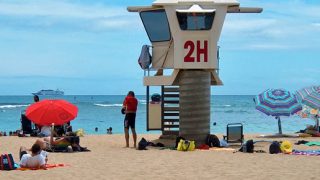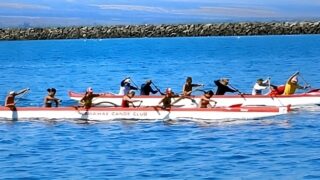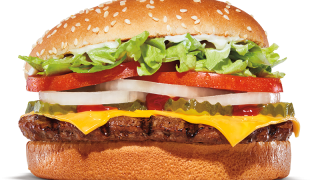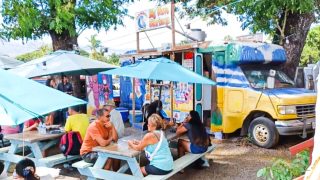Hawaii is coming for your takeout fork. The Big Island’s latest environmental push could soon ban most single-use plastics from restaurants, food trucks, and county facilities. It is part of a growing island-by-island effort that is leaving visitors confused and small businesses adjusting.
A small Big Island cafe recently estimated that new compostable containers may add about $1.50 to every plate lunch. A $12 meal could now cost $13.50, and that small bump is being repeated across thousands of orders a day. For travelers, it is another quiet shift in the cost of paradise, one that shows up at lunch counters long before it appears in headlines.
What is actually being banned and when.
Hawaii County’s Bill 83 is advancing through the legislative process, with a council vote anticipated in fall 2025. If approved, it will prohibit the sale and distribution of most disposable plastic and foam foodware beginning in 2026, with limited exemptions as suppliers adjust. That includes everyday items such as clamshell containers, forks, spoons, straws, and cups.
The goal is to reduce waste headed for the island’s already stressed landfills and to keep plastic debris out of coastal waters. Supporters call it overdue, while opponents see higher costs and logistical headaches. Either way, the next time you pick up takeout in Hilo or Kailua-Kona, expect packaging that looks greener and feels different, sometimes sturdier, sometimes not.
Why your fork is legal on Oahu but not on the Big Island.
The Big Island is not the first to move on plastics. Oahu’s Bill 40, passed in 2019 and phased in over several years, restricts most plastic takeout containers and utensils across Honolulu, though some exemptions remain. Maui’s polystyrene foam ban took effect in 2019, and Kauai’s in 2017.
Each county enforces its own version of sustainability, which means a visitor can fly from Honolulu to Hilo and find two entirely different rulebooks. The differences can be subtle. Materials that meet one island’s definition of eco-friendly may face extra scrutiny on another, leaving visitors puzzled by why some packaging looks similar but isn’t treated the same.
That local-control approach is well-intentioned but confusing. A Honolulu café might still wrap a plastic straw in paper under a remaining exemption, while a Kona shop could face a fine for the same thing. What is acceptable on one island may be restricted on another. For travelers, that inconsistency has become part of the experience and another reminder that Hawaii’s paradise often comes with fine print.
The real cost is $1.50 more per meal.
The shift away from plastic is popular in principle, but the economics remain messy. Restaurants across the Big Island report that compostable packaging costs two to three times more than traditional foam. Multiply that across thousands of takeout meals a day, and the difference adds up quickly.
The operational challenges make it worse. Biodegradable lids and containers often do not match between suppliers, shipments arrive late or short, and replacements are not always available locally. Without adequate composting infrastructure, much of that eco-friendly packaging may still end up in landfills.
The result is an awkward in-between stage. Hawaii looks cleaner on the surface, but for now, the system underneath has not caught up. Visitors may not think about it until they notice smaller portions or slight price bumps that reflect a restaurant’s attempt to stay solvent while staying compliant.
Quick facts: Hawaii’s plastic bans at a glance.
- Oahu: Most plastic foodware restricted (Bill 40, phased 2019–present)
- Maui: Foam containers banned since 2019
- Kauai: Foam containers banned since 2017
- Big Island: Bill 83 pending, council vote anticipated fall 2025
- Cost impact: $1–2 more per takeout meal
What this means for your next Hawaii trip
Tourism officials continue to make sustainability part of Hawaii’s brand. The visitor green fee debate, new water-use limits, and weekly park closures all stem from the same effort to make tourism lighter on the islands’ resources. It is a well-meaning goal, but one that is creating visible friction between ideals and implementation.
One longtime reader commented that “it feels like you need a handbook now, from parking rules to reusable bottles to which beaches are closed this week.” That frustration captures the new travel reality. Visitors support preservation, but they are also noticing the growing list of restrictions shaping even the simplest experiences.
For now, expect more paper and fewer plastics across Hawaii. If you are visiting soon, pack light but smart, with a refillable bottle, a small set of travel utensils, and maybe a collapsible container for leftovers. It is all part of Hawaii’s evolving effort to balance convenience with conservation.
How have Hawaii’s plastic bans affected your recent visits? Share your takeout experiences, the good, the messy, and the confusing.
Photo Credit: Beat of Hawaii at Waikiki Food Truck Park.
Get Breaking Hawaii Travel News







But it’s still OK to abandon junk vehicles and broken appliances all over the islands.
My gosh I’m so tired and disappointed in all the changes, rules, price hikes, taxes and people who don’t want visitors contributing to their economy.
If legislation prohibits (on Hawaii) the sale of plastic eating utensils, what’s the big deal – just give them away as the lunch truck/roach coaches have done for years.
Where do I begin?! This is such hogwash. Other states and counties have done this when the real culprit is the commercial fishing industry. All those plastic nets and micro plastics are from them. But they’ve got too much money and lobbying power so it’s easy to go after the small guy that’s barely making his meat trying to offer the quality meal too locals and tourists. It’s all about the money, just follow the money and you’ll see who the real problem businesses are..
Banned/restricted single use plastic has been a fact of life in a lot of countries for a long time. Hawaii is way behind in that regard. What will make life and shopping more interesting is if they decide to ban plastic shopping bags as well, and add a mandatory charge for reusable bags. This is common in many areas now. You’ll have to pack your own reusable shopping bags if you plan to shop at Foodland or Target.
Here in the Bay Area of California, I’ve been told to throw my “compostible” plastic-like food containers in the regular trash. They don’t break down quickly or usefully enough to grow things, but at least they don’t lay around in dumps for 50 years. So that’s a Lot better than regular plastic trash, I guess, but “compostible” is a very misleading term here. I presume the same is true of such cutlery… So in the end, it will still be in Hawai’i’s waste stream… (The cardboard containers Are usually compostible.) Mahalo for the information…
I don’t understand why 100% of the increase is passed on to the consumer. Food trucks already lack overhead, rest rooms and often do not even provide a place for their customers to eat.
I’ll just eat a place that provides basic amenities and doesn’t charge for things that should be included at no extra cost. It’s not like their food is even exceptional.
It’s mostly pre-made, kept hot and they open up
when the feel like it. It’s really an “all about me” kine business.
I live in a condo on Oahu. We’re instructed to “double” bag our garbage before dumping into the dumpster. We can an only recycle HI5 plastic bottles, as well as certain glass and aluminum only cans; everything else has to be thrown into the dumpster. I asked where our garbage goes & told that HECO uses the contents of the dumpster to burn it. What do the other islands do? Landfill only? I think on Oahu, we need more trash bins everywhere so that people have a place to dispose of things, and trash needs to be removed regularly instead of being allowed to overflow all over the place. Unfortunate that the cost of fast food containers are so expensive…that’s another problem. Everything here too expensive.
As a residents who travel extensively, we’ve been carrying reusable cutlery for years. They come in washable containers, all different types and price points. We use them on Airlines to avoid the ridiculous teeth scary bamboo cutlery in coach, which is punishing and useless.
For local takeout, we bring our own containers! At first I thought wait staff would think we were crazy or insulting them, but no, they say mahalo! and happy we solve our own need.